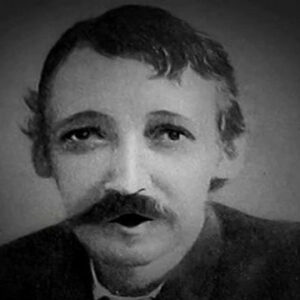Alfred Noyes was an English author and one of the most prolific authors of the 20th century. His ballads ‘The Highwayman’ and ‘The Barrel-Organ’ are particularly well-known. He was a dedicated individual who opted to pursue writing as a career throughout his college years. As evidence of his desire to become a writer, he missed an exam to see a publisher regarding his first poetry collection, a decision that lost him his graduating degree. Eventually, he released his poetry collections throughout the years and established himself as an author. Through his poetry, he created an environment that caught the reader’s attention. In addition to being a magnificent poet, he was also a critic, essayist, short story writer, novelist, biographer, autobiographer, and playwright. In his literary masterpieces, he included several themes, such as everyday life, science, religion, romance, English history, and the dangers of the sea. Even though he was gifted and had a distinct personality, his writing style was questioned and he was never recognized as a notable poet by the majority of literary schools of his time. The literary community saw him as a highly influential author at the beginning of the twentieth century, when his works were finally recognized for their merit.
Youth and Early Life
He was born in Wolverhampton, England on September 16, 1880, to Alfred Adams, a grocer, and teacher, and Amelia Adams, his mother. His father instructed him in Greek and Latin.
At the age of four, he moved with his family to Aberystwyth, Wales, where he took first inspiration from the Welsh coast and mountains.
He attended Exeter College in 1898. During his undergraduate years, he excelled at rowing, but he departed without completing his degree.
In 1902, he chose to meet with a publisher to arrange the publishing of his first book volume than taking one of his final exams. Due to this occurrence, he was unable to acquire a diploma.
Alfred Noyes’s Career
The Loom of Years, his first collection of poems, was released in 1902. Distinguished poets such as William Butler Yeats and George Meredith praised it.
With the release of his successive poetry collections, ‘The Flower of Old Japan’ (1903) and ‘Works’ (1904), which included ‘The Barrel-Organ,’ one of his most popular poems, he solidified his name as a poet.
His most famous poem, “The Highwayman,” was published in the August 1906 issue of Blackwood’s Magazine. In 1906 and 1908, he released two volumes of “Drake,” a two-hundred-page epic about life at sea.
‘Forty Singing Seamen’ (1907) and ‘The Golden Hynde’ are more examples of his historical narrative poetry (1908). Sherwood, his sole full-length drama, was released in 1911.
In 1914, he obtained a position as a visiting professor at the prestigious Princeton University, where he taught English Literature for nine years before resigning in 1923.
‘Walking Shadows’ (1918) and ‘The Hidden Player’ are two of his short pieces, most of which he described as fantasies (1924).
He was also a novelist, with works such as “The Return of the Scarecrow” (1929) and “The Last Man” (1940).
His criticisms include ‘Some Aspects of Modern Poetry’ (1924), ‘The Opalescent Parrot’ (1929), and ‘Pageant of Letters’ (1940).
Other literary works by this author include ‘The Forest of Wild Thyme’ (1905), ‘Collected Poems’ (1950), ‘A Letter to Lucian’ (1956), and ‘The Accusing Ghost’ (1958). (1957). Two Worlds for Memory, his autobiography, was released in 1953.
Alfred’s Major Opera
The Torch-Bearers, which consists of ‘Watchers of the Sky’ (1922), ‘The Book of Earth’ (1925), and ‘The Last Voyage,’ was his most ambitious work (1930). It focuses on the evolution of science throughout the ages. It is considered one of his most stunning works ever.
The Highwayman (1906), a romantic tragedy about the doomed love of a highwayman and an innkeeper’s daughter, is his most known work. It ranked 15th in the BBC’s 1995 poll of “The Nation’s Favorite Poems.”
His other notable works include “The Flower of Old Japan” (1903) and “Drake” (1906-1908).
Awards & Achievements
In 1918, he was awarded the Order of the British Empire, the most junior and widespread order of knighthood in British and Commonwealth honors systems.
In 1913, he obtained an honorary Doctor of Letters degree from the esteemed Yale University in Connecticut, United States.
Personal History and Legacy
Noyes wed Garnett Daniels, the youngest daughter of a Union Civil War veteran, in 1907. They were fortunate to have three children. Garnett died in 1926 while staying with friends in Saint-Jean-de-Luz, France.
In 1927, he married Mary Angela née Mayne, widow of World War I-killed Lieutenant Richard Shireburn Weld-Blundell. In addition, they had three children named Hugh, Veronica, and Margaret.
He died on Isle of Wright on June 25, 1958, at the age of 77. He is laid to rest in the Roman Catholic cemetery located in Freshwater, Isle of Wight.
Estimated Net Worth
Alfred is one of the wealthiest and most popular poets. According to our research, Wikipedia, Forbes, and Business Insider, Alfred Noyes has an estimated net worth of $1.5 million.


